- The Issues
- Our Work
- Get Involved
- Data
News & Events
2023 Winter Newsletter
Safety Spotlight: NDOT Publishes the Speed Management Action Plan
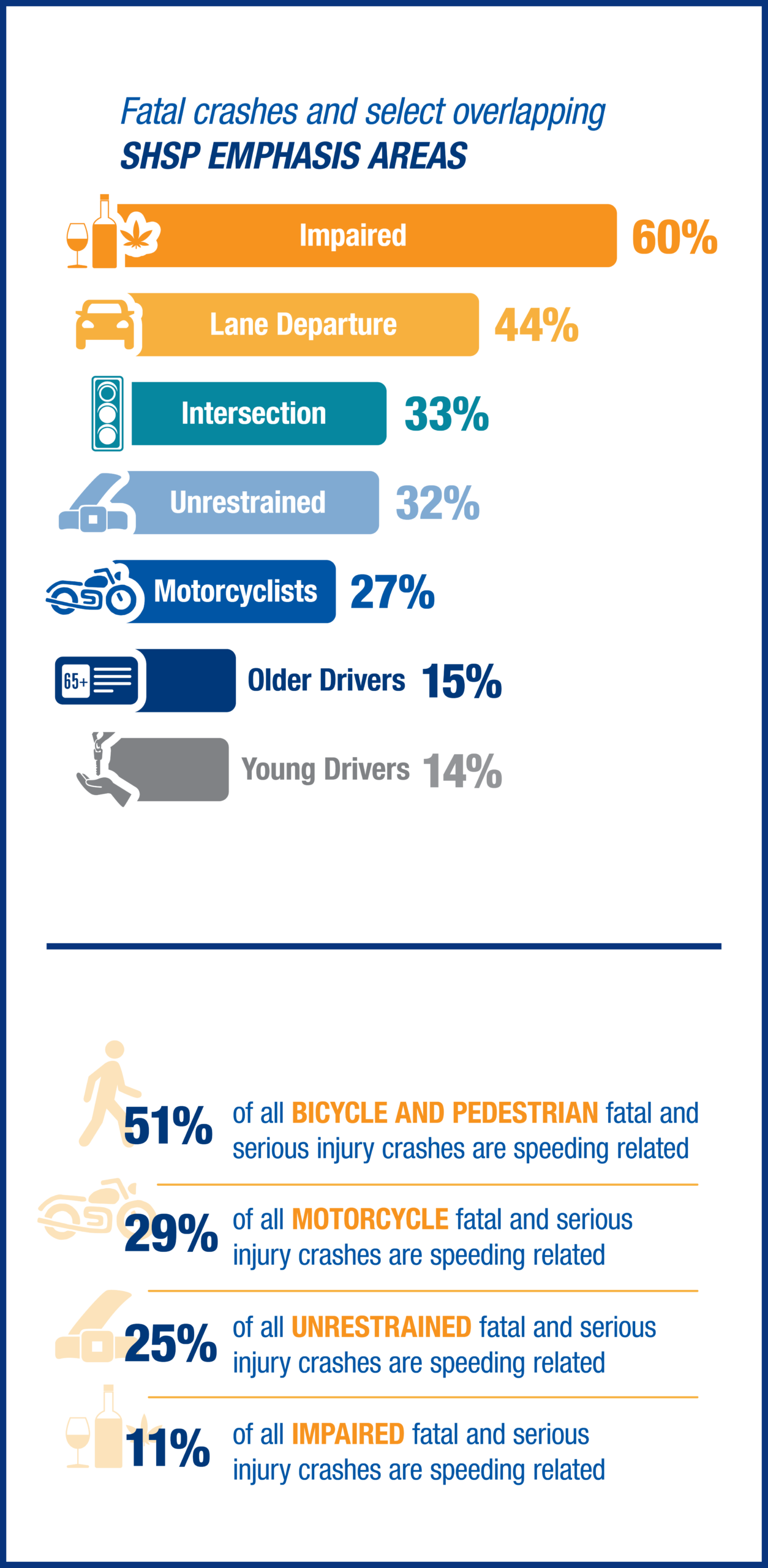 Speeding is widespread throughout Nevada. Between 2015 and 2019, there was an average of 175,000 speeding-related citations per year. The Speed Management Action Plan (SMAP) characterizes Nevada’s speed and speeding-related safety problems and speed management issues; identifies appropriate engineering, enforcement, and educational countermeasures and strategies; and outlines actions that NDOT and partner agencies can take to implement these strategies to reduce speeding and speed-related fatal and serious injury crashes.
Speeding is widespread throughout Nevada. Between 2015 and 2019, there was an average of 175,000 speeding-related citations per year. The Speed Management Action Plan (SMAP) characterizes Nevada’s speed and speeding-related safety problems and speed management issues; identifies appropriate engineering, enforcement, and educational countermeasures and strategies; and outlines actions that NDOT and partner agencies can take to implement these strategies to reduce speeding and speed-related fatal and serious injury crashes.
The SMAP has three basic approaches to the implementation of strategies and counters: proactive, comprehensive, and systematic. The goals of the SMAP are to reduce fatalities and serious injuries and to improve speed compliance. The primary measures of program effectiveness are safety measures:
- Reduction in speeding-related fatalities to zero by 2050
- Number of actions that are completed
- Adoption of an NDOT policy to use the Strategies to Achieve Desired Operating Speeds Matrix
- Number of locations where Strategies to Achieve Desired Operating Speeds Matrix are implemented
- Reduction in 85th percentile speeds to target speed at locations where countermeasure to Achieve Target Speeds are implemented
The program will be evaluated with respect to changes in crashes, especially fatal and serious injury crashes and speeding-related crashes compared with trends absent the program. Speed measurements provide earlier feedback than crash trends and are a good indicator of safety risk.
Learn more about the SMAP here.
DUI Prevention for Cannabis Consumption Lounges
In the 2021 Nevada Legislative Session, Assembly Bill 341 was passed to permit Cannabis Consumption Lounges in Nevada. The law limits the number of permits for Cannabis Consumption Lounges to 40, with restrictions:
- Twenty must be attached to dispensaries
- Ten can be independent licenses
- Ten must be allocated to social equity applicants
The Cannabis Compliance Board is overseeing the permits and their requirements. Most of the lounges are located in Clark County and Las Vegas, with a few in Nye County, one in Storey County, and one in Washoe County.
It is expected that consumption lounges will operate similar to a tasting room at a winery. Staff will be trained to educate clients about the products. Products will be single-serve and will be required to be consumed onsite. Outside product will not be permitted, and while lounges can serve food, there will be no alcohol, smoking tobacco products, or vaping.
With a focus on traffic safety, and in an effort to prevent impaired driving, all permit applicants are required to submit a Driving Under the Influence (DUI) Prevention Plan. These plans may include additional education for staff to identify signs of over-consumption, “no tow” policies in parking areas, rideshare discounts, and perks for designated drivers.
For more information on cannabis consumption lounges, please visit the Nevada Cannabis Compliance Board’s website: Home – Nevada Cannabis Compliance Board.
Traffic Safety Policy Priorities
In Summer 2022, the Nevada Advisory Committee on Traffic Safety (NVACTS) put forward recommendations for traffic safety policy priorities. Based on a review of the crash data and current traffic safety issues in Nevada, these policy priorities recommend changes that would lead to the reduction of traffic-related fatalities and serious injuries on Nevada’s roadways. The policy priorities include:
- Graduated Driver’s License
- Higher Fines in School Zones
- Primary Seat Belt Law
- Road Safety Cameras
- Road Safety Cameras in School Zones
- Roadside Drug Impairment Testing
Click the links above to access a fact sheet for each policy priority.
Nevada Traffic Safety Task Forces
 The Nevada Strategic Highway Safety Plan (SHSP) addresses Critical Emphasis Areas (CEAs) involved in a high number of fatalities and serious injuries. To provide synergy between CEAs, the nine CEAs are split between Key Areas, each of which has a Task Force that meets quarterly to address both common and CEA-specific issues. The organizational structure for the CEAs and Key Areas is shown in the chart.
The Nevada Strategic Highway Safety Plan (SHSP) addresses Critical Emphasis Areas (CEAs) involved in a high number of fatalities and serious injuries. To provide synergy between CEAs, the nine CEAs are split between Key Areas, each of which has a Task Force that meets quarterly to address both common and CEA-specific issues. The organizational structure for the CEAs and Key Areas is shown in the chart.
Task Force membership is open to all interested agencies within the State of Nevada and the public. New members/agencies may be added at any time. The intent is for each agency to have one designated member to attend the quarterly meetings for each Key Area Task Force or assign a substitute. There are three levels of involvement:
- Chair: There will be one chair for each Key Area Task Force.
- Vice Chair: Each Key Area Task Force will have CEA Vice Chairs that coordinate the implementation of the Strategies and Action Steps with CEA Action Step Leaders and report back to the Key Area Task Force.
- Action Step Leader: Leads or coordinates the implementation of action steps and tracks progress, attends interim meetings to provide a summary of action step activities to the Vice Chair, and attends quarterly Task Force meetings.
- Member: Attends quarterly Task Force meetings and sends a representative from their organization if they cannot attend.
- Follower: Prefers to remain on the distribution list to review Task Force meeting agendas and receive minutes, but generally does not attend Task Force meetings
Why get involved?
Reducing fatalities and serious injuries on our roadways requires partnership among all 5 Es of Traffic Safety (Equity, Education, Engineering, Enforcement, Emergency Services, and Everyone). The quarterly meetings provide an opportunity for members to share updates from their agency, hear what other states are doing, and learn about projects, programs, and outreach from other agencies at the local and state level.
For more information on how to get involved, view the Task Force Guidance document.
NDOT’s Passing and Climbing Lane Study
 NDOT initiated a statewide comprehensive study to establish a new methodology and process to identify and prioritize locations where passing and climbing lanes may provide benefits. Adding a passing or climbing lane along an existing highway could enhance safety, improve traffic operations, and provide overall mobility benefits in the most cost-effective way. The result is a data-driven process, utilizing current transportation datasets, and identifying passing and climbing lane opportunities that would provide the most effective and feasible locations.
NDOT initiated a statewide comprehensive study to establish a new methodology and process to identify and prioritize locations where passing and climbing lanes may provide benefits. Adding a passing or climbing lane along an existing highway could enhance safety, improve traffic operations, and provide overall mobility benefits in the most cost-effective way. The result is a data-driven process, utilizing current transportation datasets, and identifying passing and climbing lane opportunities that would provide the most effective and feasible locations.
Prioritization variables include traffic volumes, percent trucks, K and D factor, roadway grade, lane/shoulder width, access point density, percent time spent following, percent of passing related crashes, property damage equivalency, proximity to adjacent passing lanes, proximity to emergency response, future crashes, and annual average daily traffic (AADT) in next phases.
The implementation process consists of a desktop review and documents uses of field conditions for candidate segments and applies engineering judgment to determine potential constructability. This includes potential right-of-way widths to accommodate extra lanes, the potential existence of sensitive environmental conditions through visual inspection, and potential impediments to constructability. While these segments have been prioritized, they will still need to be further developed and filtered through the One Nevada process to prioritize them against other statewide needs to program and fund the projects that best achieve their goals.
2022 Fall Newsletter
NDOT Releases New Crash Maps
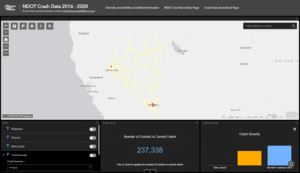 New data is available on the NDOT Crash Maps. The map now includes five-year crash data, augmenting the previously provided three-year crash data. NDOT will be including some tutorials on how to use the new crash map soon, to make it easier for users to pull their own data. NDOT is hoping to have 2021 and 2022 data sometime early next year after our Crash Data Improvement Project is complete.
New data is available on the NDOT Crash Maps. The map now includes five-year crash data, augmenting the previously provided three-year crash data. NDOT will be including some tutorials on how to use the new crash map soon, to make it easier for users to pull their own data. NDOT is hoping to have 2021 and 2022 data sometime early next year after our Crash Data Improvement Project is complete.
NDOT is looking for feedback on the webmap, such as features or improvements users would like to see. Please e-mail crashinforequests@dot.nv.gov with any feedback, comments, or questions.
TREND in Focus: Nevada Non-Adjudicated Child Passenger Safety Citations (2018-2021)
The September 2022 Issue of Nevada’s Traffic Research and Education Newsletter (TREND) includes a descriptive analysis of child passenger safety citations.
September was National Child Passenger Safety (CPS) Month, which offered an opportunity for parents and guardians to make sure they are up to date on Nevada’s CPS law, as well as to conduct an annual check that their child is using the correct restraint for their age, height, and weight. In 2020, there were 656 deaths of child occupants between the ages of 0-12 years in motor vehicle crashes in the U.S. [1].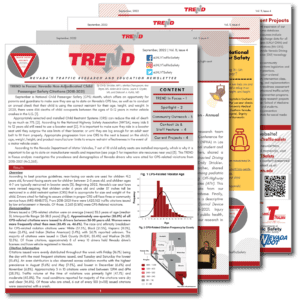
Appropriately selected and installed Child Restraint Systems (CRS) can reduce the risk of death by as much as 71% [2]. According to the National Highway Safety Association (NHTSA), many kids 8 to 12 years old still need to use a booster seat [2]. It is important to make sure they ride in a booster seat until they outgrow the size limits of their booster, or until they are big enough for an adult seat belt to fit them properly. Appropriate progression from one CRS to the next is based on the child’s age, weight, height, and product manufacturer limits to ensure restraint effectiveness in the event of a motor vehicle crash.
According to the Nevada Department of Motor Vehicles, 7 out of 10 child safety seats are installed improperly, which is why it is important to be up to date on manufacturer recalls and inspection (see page 3 for inspection site resources near you) [3]. This TREND in Focus analysis investigates the prevalence and demographics of Nevada drivers who were cited for CPS-related violations from 2018-2021 (N=2,265).
For additional details, we encourage you to explore the full newsletter at the following link: TREND 11.4 and the simplified visualization of this analysis in Infographic 5.4.
2022 Nevada Traffic Safety Awards
The Nevada Traffic Safety Awards recognize individuals and organizations who have made significant contributions to transportation safety in Nevada. The program recognizes accomplishments in the public and private sectors by individuals, state and local governments, federal agencies, businesses, and non-profit organizations that promote traffic safety. View the award recipients here.
This program is sponsored by Nevada Department of Transportation, the Nevada Department of Public Safety, and other traffic safety partners that are dedicated to reducing fatalities and serious injuries on Nevada’s roadways.
 |
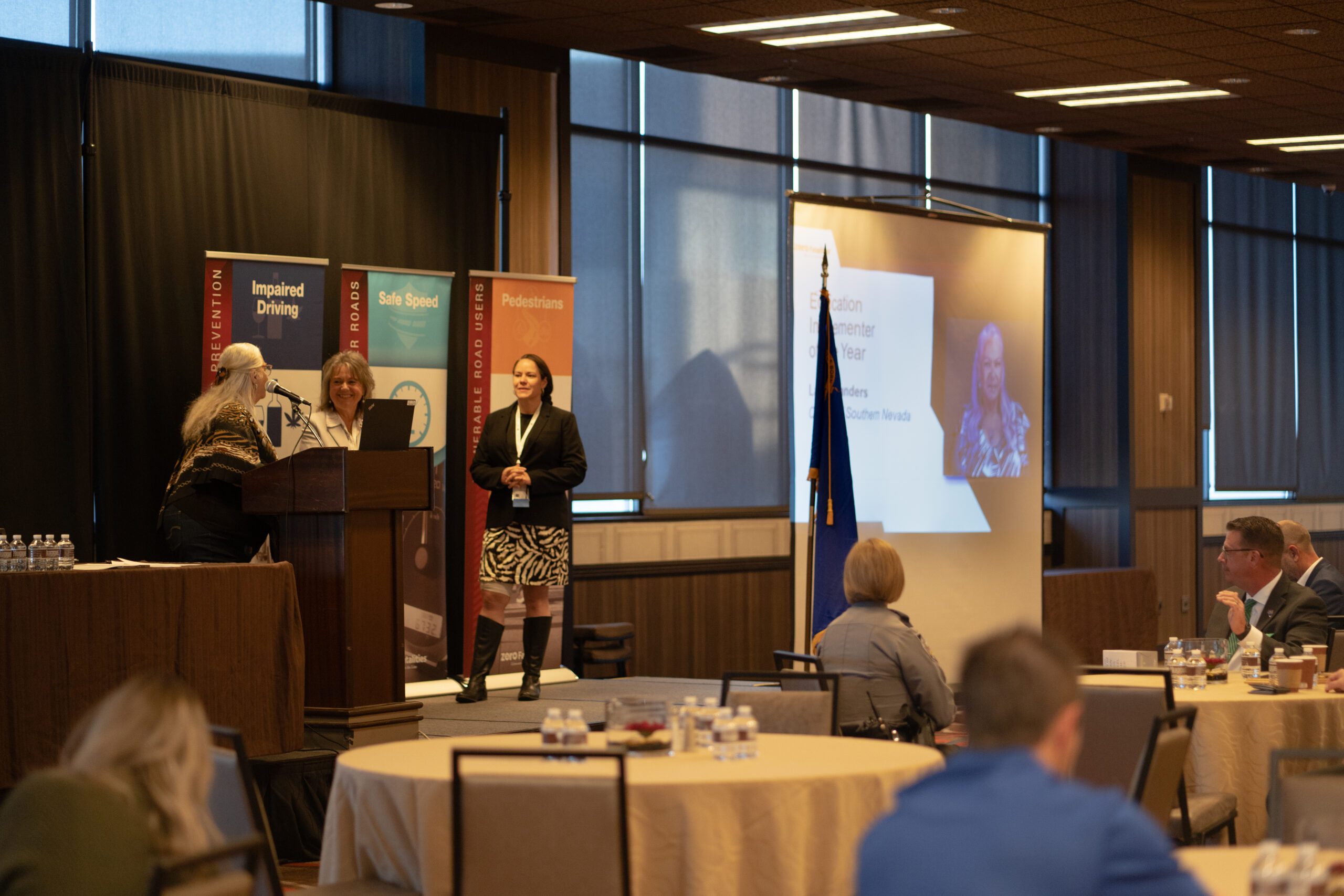 |
 |
 |
 |
 |
2022 Traffic Safety Summit Recap

This fall, the Nevada Traffic Safety Summit gathered in person in Sparks, Nevada. The two-day event brought together traffic safety experts from across the state to share knowledge and ideas in the continued collaborative effort to increase roadway safety in Nevada. Over 300 professionals gathered at the Nugget Casino Resort from October 19-20, a record attendance for the Nevada Traffic Safety Summit!
Session offerings included child passenger safety and motorcycle safety workshops, Strategic Highway Research Program 2 (SHRP 2) Traffic Incident Management (TIM) training, a law enforcement panel discussion, and traffic safety technology presentations. Focused sessions also included presentations on keeping young drivers safe, transportation safety equity, the Safe System Approach, and grant writing.
Keynote sessions featured Gina Espinosa-Salcedo of the National Highway Traffic Safety Administration (NHTSA), who presented on active transportation, in addition to Shelly Baldwin of the Washington State Traffic Safety Commission, who presented on the proactive traffic safety culture implementation in Washington State.
Mayor Lawson of the City of Sparks also provided a special presentation on improvements in the City of Sparks related to connectivity, access, and safety.
The 2022 Nevada Traffic Safety Summit closed with the TIM crash demonstration with participation from response partners in Northern Nevada. Thank you to those who participated in this event. We look forward to seeing you again in 2023 for another in-person Traffic Safety Summit in Southern Nevada.
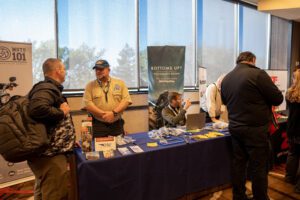 |
 |
 |
 |
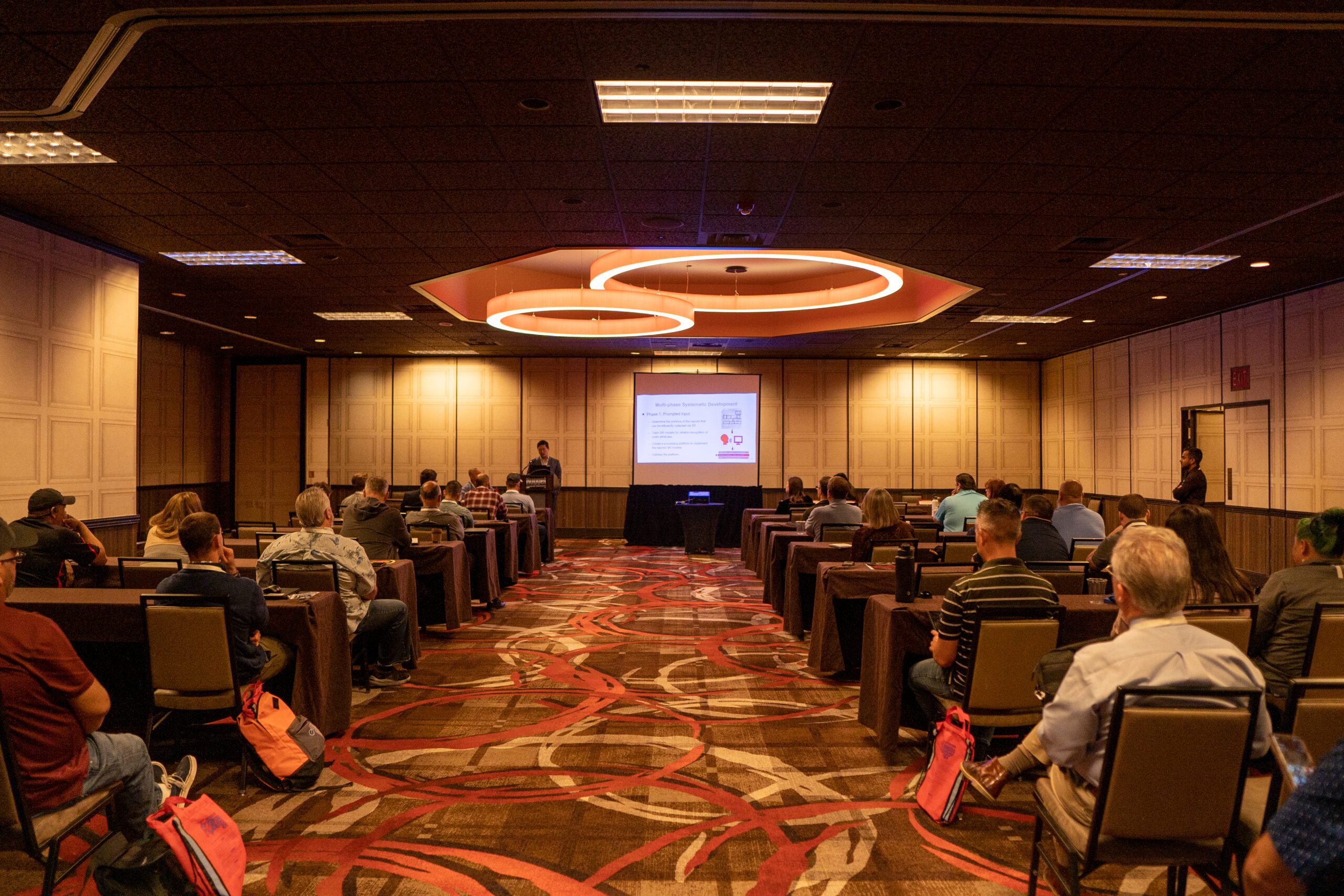 |
 |

